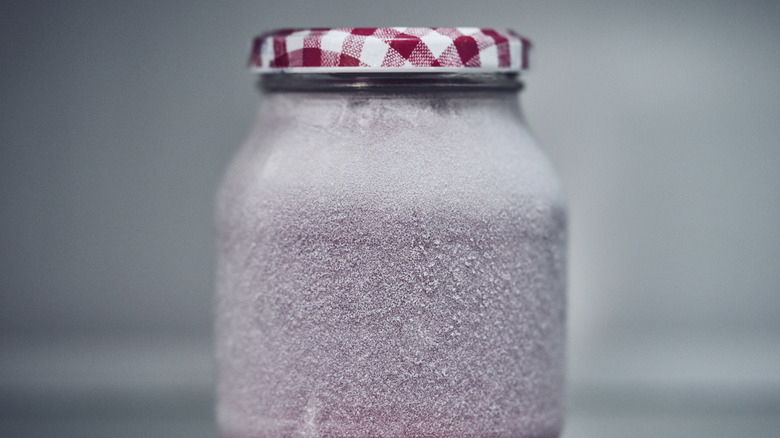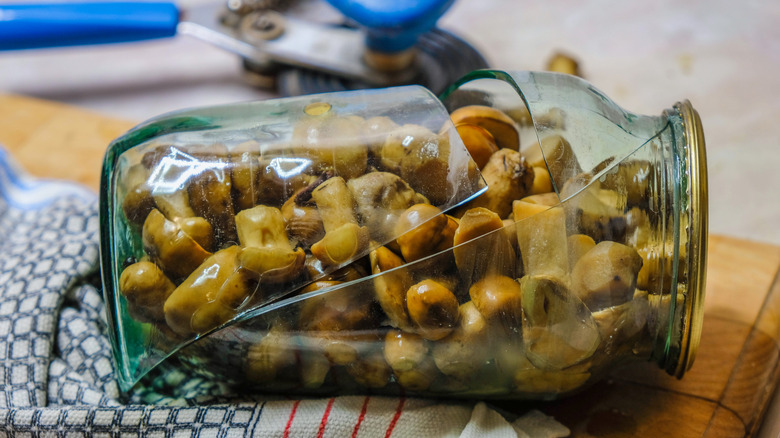Before You Put A Glass Jar In The Freezer, There's One Thing You Should Note
Something about storing things in a glass jar feels inherently fancy, even if it's technically an old pasta sauce container. Jars are perfect for storing batches of beverages or soups. But if you're not careful, you might open up your freezer to find a shattered mess instead of your beloved leftovers.
The risk of shattering is one of the few cons of glass jars amid a sea of pros. Compared to plastic, glass is more durable and long-lasting — you'll inevitably have to throw away your plastic storage containers when they get too warped, smelly, or discolored to use any longer, but that's not the case with glass. It's non-porous and easy to clean, and it doesn't carry any risk of leaching unwanted chemicals into your food like plastic does. (It also just looks nicer and makes leftovers more appetizing.)
That said, potential shattering is a pretty big con. Not only could it cause an injury if it happens at the wrong time, but it also makes the food in the container unsafe to eat. Nonetheless, many people reuse old glass jars as freezer storage with no issues by taking a few easy precautions.
How to avoid shattering glass jars in the freezer
To avoid shattering your glass jars, it helps to understand why it happens. The first reason is a phenomenon called thermal shock: Glass expands and contracts with temperature changes, and when this happens too quickly, the glass shifts unevenly, leading to cracks or explosions. Some types of glass are more vulnerable than others. Mason jars are made of annealed glass, which can withstand about 90 degrees Fahrenheit of temperature change before breaking. That's sturdier than your average leftover pasta jar but still not as resistant as tempered or borosilicate glass containers, such as Pyrex. In addition to thermal shock, glass jars may also shatter as the liquid inside solidifies and expands.
To prevent thermal shock, avoid sudden temperature changes, like pouring a hot drink into a cold mason jar or putting a hot jar into the freezer. Instead, put it in the fridge first so the temperature shifts more gradually. The same goes for thawing — slow the process down by first moving the jar from the freezer to the back of the fridge. To accommodate liquid expansion, either use jars with straight sides and no shoulders or fill the glass jars only to below the shoulders. Keep lids loose, and don't let jars touch each other in the freezer.
If you want to play it safe, you can also buy freezer-safe glass storage containers, which are made with tempered or borosilicate glass and are resistant to thermal shock. But no glass is 100% immune to shattering, so even with these containers, it's best to exercise caution.

